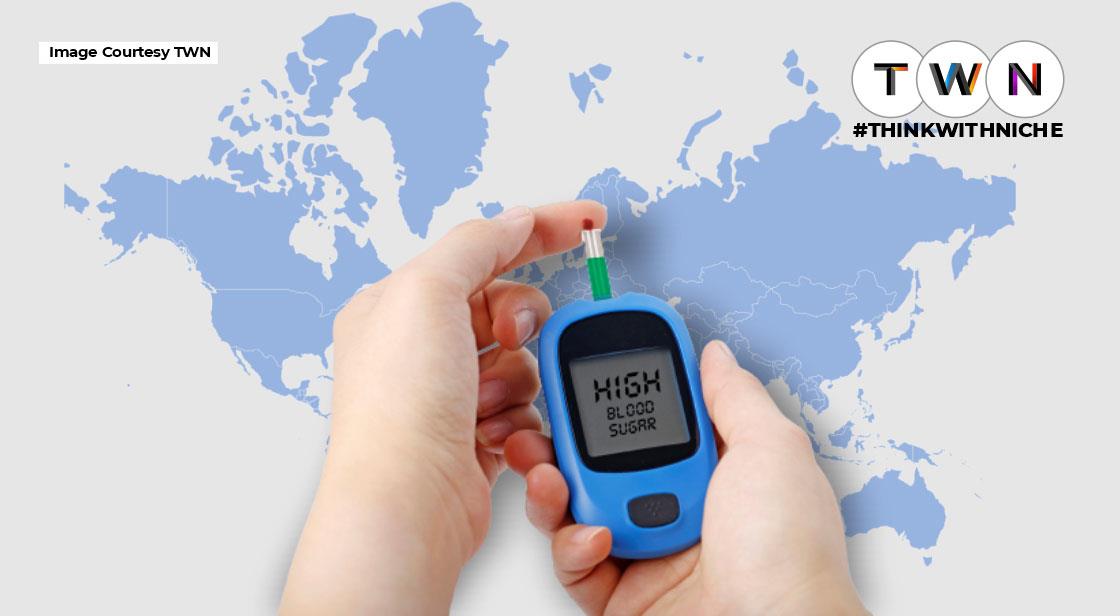World Diabetes Day 2022 : Access To Diabetes Education

Blog Post
Diabetes continues to be a major health problem that continues to impact people all over the world. Diabetes is when blood sugar or glucose levels are too high. This can lead to other serious problems like kidney failure and stroke. It is crucial to raise awareness about a terrible disease like diabetes. Every year, World Diabetes Day (November 14) is observed to raise awareness about the many complications of this chronic disease. With support from the World Health Organisation, the International Diabetes Federation proposed the day in 1991. It became an official United Nations Day on June 6, 2006.
World Diabetes Day (WDD), an important healthcare event, is celebrated every year on the 14th of November. It aims to raise awareness about diabetes and its effects and educate the public about ways to prevent it. World Diabetes Day is the largest diabetes awareness campaign. It has a presence in over 160 countries and has an impact on the lives of more than 100 million people.
Diabetes is a condition in which the body cannot process or use the glucose that is generated from food. The body's main source of energy is glucose. Unmanaged diabetes can lead to serious complications such as heart disease, nerve damage, and kidney damage.
Importance of World Diabetes Day
International Diabetes Foundation (IDF) estimates that diabetes is responsible for 67 lakh deaths in 2021. It is estimated that 53.7 million (1 in 10) people had this disease in the same year. There is evidence that this number will rise to 64.3 crore in 2030, and 78.3 billion by 2045.
The estimated 1 in 2 adults (or approximately 24 million people) with diabetes is not diagnosed. However, most of those affected had type 2 diabetes. Lifestyle changes and healthy eating habits can help prevent this from happening. It is estimated that 54.1 million adults are at risk for developing type 2 diabetes due to a lack of information and guidance.
It is estimated that approximately 10.2 lakh teenagers (ages 0-19 years) have Type 2 diabetes because of their sedentary lifestyle. One in six live births (2.1 million) is affected by high blood glucose (hyperglycemia).
The management of diabetes was responsible for 9% of the global health expenditure in 2021. World Diabetes Day is a worldwide platform that advocates and prevents this silent-killer disease.
World Diabetes Day 2022 Theme
World Diabetes Day 2022's theme is "Access to Diabetes Education", which supports the multi-year, more extensive topic of "Access to Care", according to the World Health Organization (WHO). World Diabetes Day is celebrated annually on November 14. It provides an opportunity to raise awareness about diabetes as a global public concern and to discuss what can be done individually and collectively to improve diabetes prevention, diagnosis, and management.
This theme is also intended to educate and encourage people to appeal to their public health institutions and other global institutions for better opportunities, manpower, and financial support to improve diabetes education. The combined effort of WHO and other organizations to reach the 2030 target for diabetes coverage includes:
-
Diabetes diagnosis in 80% of diabetics.
-
80 percent of those diagnosed with diabetes should have better control over their blood pressure and glycaemia.
-
60 % of adults (40 years and older) should have access to Statin (a group of drugs that helps lower cholesterol levels in the blood).
-
Access to Insulin should be easy for 100% of Type 1 diabetics.
History of World Diabetes Day (WDD)
World Diabetes Day (WDD), which was established by the International Diabetes Foundation (IDF), in 1991 with collaboration with World Health Organization, (WHO), became an official United Nations Day in 2006 under UN Resolution 61/225.
To commemorate Sir Frederick Banting's birthday, 14 November was chosen. He and Charles Best discovered Insulin in 1922.
The "Blue Circle Logo" denotes campaigns that are held on World Diabetes Day. It was created in 2007, just after the day was officially acknowledged by United Nations. Since then, Blue Circle has been considered the global symbol for Diabetes Awareness. It denotes the alliance of global diabetes communities working to combat the increasing incidences of diabetes.
Preventive Measures To Manage Diabetes
International Diabetes Foundation estimates that 54.1 million adults are at risk of developing type 2. This is a serious concern and must be addressed worldwide. You can prevent and manage Type 2 Diabetes by adopting healthy lifestyle habits, managing your diet (diets that are below 50 on the Glycemic Index), and following a proper diet. Type 2 Diabetes refers to a condition in which insulin is not produced or used efficiently (also known as insulin resistance). This can be reversed by living a disciplined life, monitoring your blood sugar levels, and consulting with doctors regularly.
5 Food Items You Can Include In Your Diet:
1. Citrus fruits
Oranges and lemons, which are both tangy fruits, are well-known for their freshness and tart taste. You can also add a little tanginess to many dishes. There are many other reasons to eat them. The American Diabetes Association states that citrus fruits are rich in healthy fibre, potassium, and folate which can help manage diabetes and regulate blood sugar levels. Here's how to make a delicious garlic cinnamon lemonade tea.
2.Yogurt
Indians use yogurt for many purposes, including making delicious lassi or lip-smacking dips.yogurt is a good option for diabetics. According to Harvard School of Public Health (HSPH), yogurt may lower your risk of developing type-2 diabetes. Yogurt is high in calcium and protein, which may help improve overall health.
3. Chia seeds
The superfood chia seeds is touted as a powerful way to lose weight. Experts believe that chia seeds can help with diabetes management. They are rich in antioxidants, omega-3 fat acids, magnesium, fiber, and other nutrients. These nutrients can reduce your risk of developing type 2 diabetes.
4. Mixed nuts
Mixed nuts such as almonds and cashews should be enjoyed on a regular basis. These foods are high in omega-3 fatty acid and have a low Glycaemic Index. Other properties of nuts can help reduce diabetes inflammation, blood sugar, and LDL levels. A daily intake of 30g of nuts is equal to one handful.
5. Whole grains
Whole grains such as barley and oatmeal are good options for diabetics. These whole grains are full of fiber and can take a while to digest. These fibres prevent blood sugar spikes. Another advantage is that whole grains are rich in Vitamin B, iron, and minerals.
(For more information, consult your doctor or a specialist. TWN is not responsible for the information.)
You May Like
EDITOR’S CHOICE












